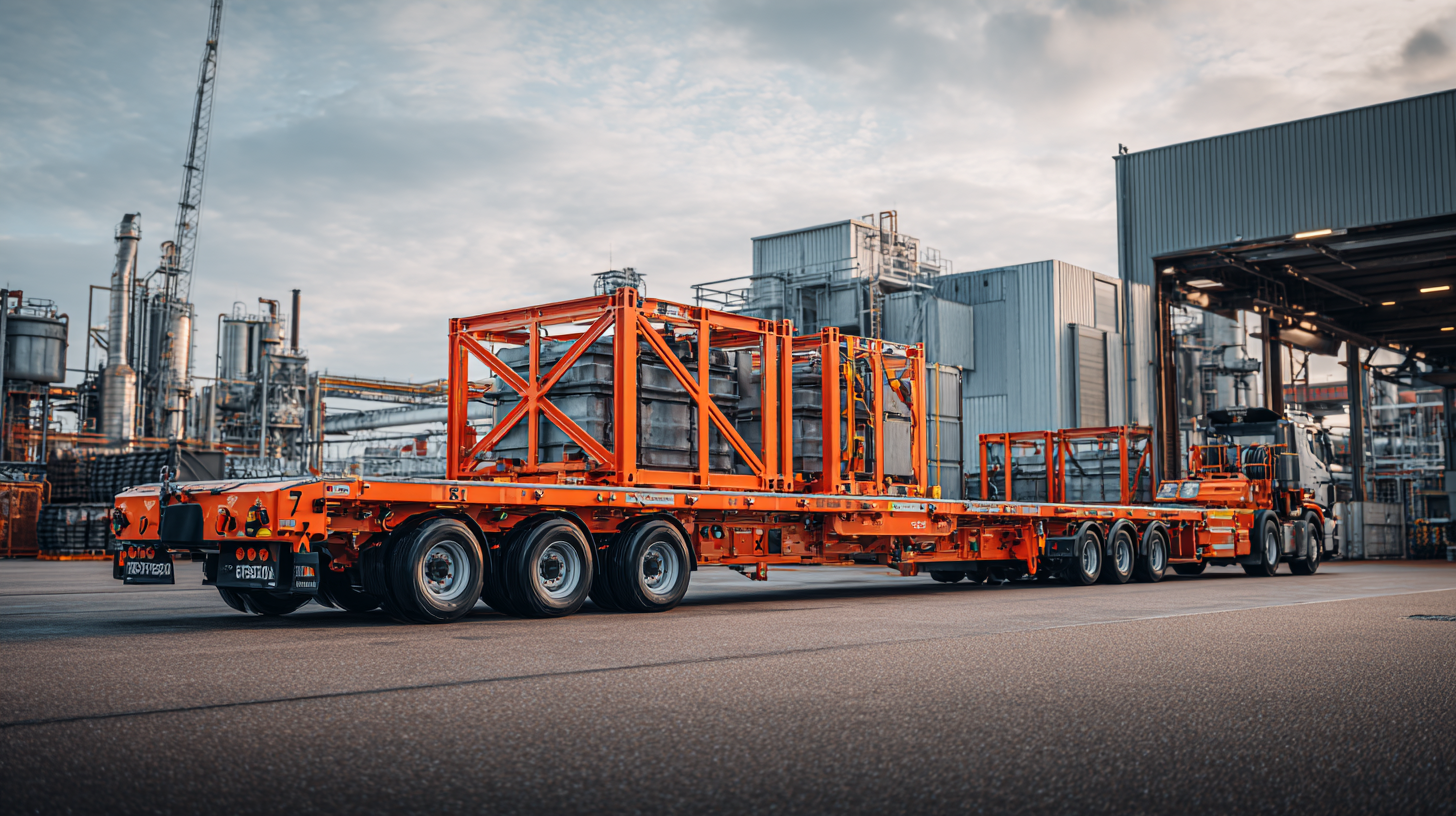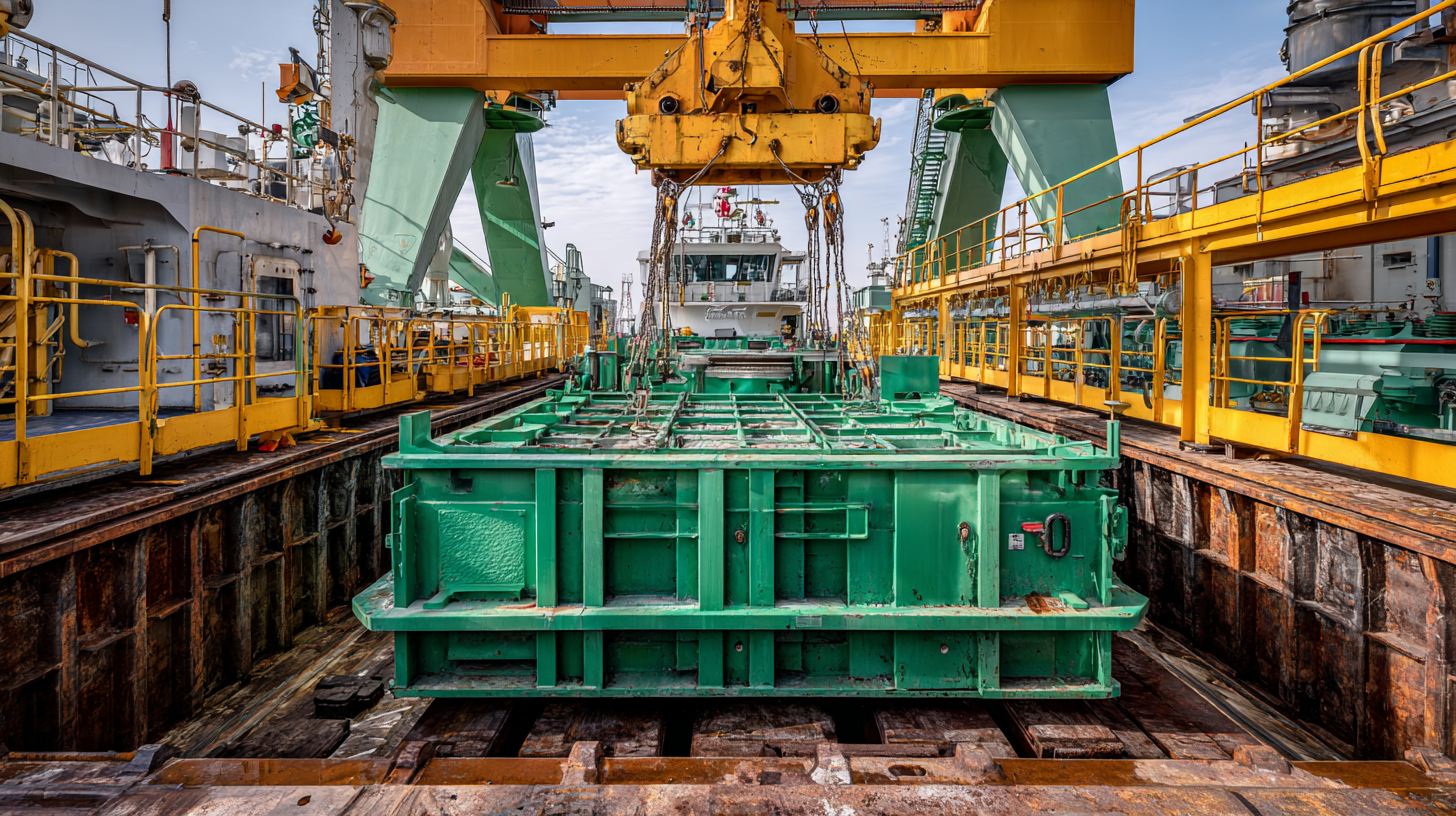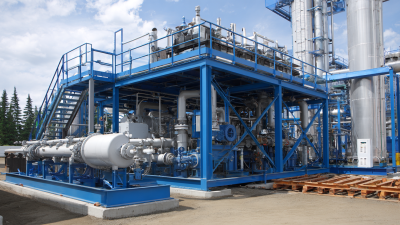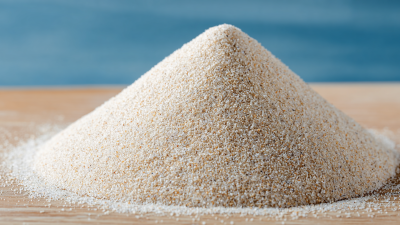

In the fast-changing world of oil and gas, making operations run smoothly really hinges on how well you source and use advanced separation tech — especially Flotatie Units. According to the latest market reports, the global need for separation equipment is expected to grow significantly. That's mainly because companies are looking for ways to be more efficient and cut down on operational costs.

At Shanghai Shangjiang Petroleum Engineering Equipment Co., Ltd., we've been right there at the forefront, dedicated to providing state-of-the-art separation and filtration solutions. We're always working to improve our cyclone separation products, so we can stay ahead of industry trends and meet the ever-changing needs of our clients. When you get the key factors right in sourcing Flotatie Units, you can really boost performance and navigate the tricky modern energy market a lot more easily.
Flotation units are honestly pretty essential in a bunch of industrial processes, especially when it comes to mineral processing and treating wastewater. Basically, these units work on the simple idea of using air bubbles to separate out particles from liquids. When you introduce air into the mix, it creates bubbles that latch onto the tiny particles, lifting them to the surface where they can be scooped out. Knowing the different types of flotation units out there is actually pretty important if you wanna get your operation running smoothly and efficiently.
Now, there are two main types you’re likely to come across: mechanical flotation cells and flotation columns. The mechanical ones rely on impellers—these fancy mixers that churn things up to create just the right amount of turbulence and air flow for good separation. They’re quite versatile because you can control things like how much air goes in and how vigorous the agitation is, making them a solid choice for various jobs. The flotation columns are a bit different—they work on a sort of counter-current flow of air and liquid, which helps with separation, especially for really fine particles. Picking the right flotation unit totally depends on what you’re processing and what your goals are for the operation.
So yeah, understanding these differences can make a big difference in optimizing your process and getting the best results.
When you're looking to source flotation units, there are quite a few important things to keep in mind if you want things to run smoothly and get the best results. I came across this industry report from MarketsandMarkets — it says the global market for flotation equipment is expected to hit around $2.6 billion by 2025, growing at about 5.8% annually. That just goes to show there's a growing need for innovative solutions in mineral processing. So, picking the right flotation unit that fits your specific needs really matters.
One of the first things you want to think about is what kinds of minerals you're dealing with. Different flotation technologies like mechanical cells, column flotation, or dissolved air flotation are better suited for different ores and material types. A study from the International Journal of Mineral Processing showed that using more advanced flotation methods can boost recovery rates by up to 15%. Also, don’t forget to look at energy efficiency and operating costs — a good choice here can save money and boost productivity in the long run. Using data from trustworthy industry sources can really help you make smarter decisions and fine-tune your flotation processes for better performance.

Looking for the right flotation unit for your operations? One of the first things you should check is the supplier's background and experience with flotation technology. Honestly, if they've been around the block a few times and have a solid track record, it says a lot—they probably understand the ins and outs better than newcomers. It helps to look for companies that have been in the game for years and can even share references from clients they've worked with before. Nothing beats hearing firsthand how things went.
Then, you'll want to dive into their technical skills. Are their team members properly qualified and certified? Are they using the latest tech? A supplier that's investing in R&D is probably a step ahead, offering smarter, more tailored solutions that match your specific needs. Don’t forget to check out what kind of support and maintenance services they provide, because those really make or break ongoing efficiency and help minimize downtime. When you take all this into account, you'll be in a better spot to pick a partner who can really keep your flotation operations running smoothly — stress-free, hopefully!
 When you're looking into getting flotation units for smoother operations, it's really important to do a thorough cost-benefit check across different models. In the oil and gas world, separation equipment is a big deal—it helps boost productivity and makes processes run more smoothly. Shanghai Shangjiang Petroleum Engineering Equipment Co., Ltd. is pretty much a go-to when it comes to developing cutting-edge flotation systems, making sure their clients get tailored solutions for their specific separation needs.
When you're looking into getting flotation units for smoother operations, it's really important to do a thorough cost-benefit check across different models. In the oil and gas world, separation equipment is a big deal—it helps boost productivity and makes processes run more smoothly. Shanghai Shangjiang Petroleum Engineering Equipment Co., Ltd. is pretty much a go-to when it comes to developing cutting-edge flotation systems, making sure their clients get tailored solutions for their specific separation needs.
To make smarter choices, you should take a good look at what each flotation unit will actually cost to run. Things like energy use, how much maintenance it needs, and the upfront cost all matter when you’re trying to weigh efficiency and profit. Plus, think about whether the unit can grow with your operation—can it handle different production levels without breaking the bank?
Pro tip: Spend some time digging into the market—compare different models and see how they perform. This way, you’ll find options that not only save you money but also fit well with what your operation needs.
Another tip: Don’t hesitate to reach out to manufacturers like Shanghai Shangjiang. They’re always working on improving their tech and can offer valuable insights into the latest flotation unit innovations that might give you a leg up over the competition.
Adding flotation units into your daily operations is pretty much a must if you want to boost performance and make things run smoother overall. The key is to approach this step thoughtfully—planning ahead can really make a difference. Start by taking a good look at how your current workflow is set up and see where these units could jump in to add some value. Also, try to place them close to the main work zones—this helps cut down on unnecessary transport time and keeps the material flowing nicely without hiccups.
A few tips to make the integration smooth? First off, get your team involved early on. They’re often the best source for spotting what works and where the bottlenecks are. Plus, investing some time in training your folks on how to operate and troubleshoot the flotation units is a total game-changer—it saves you headaches down the line. Regular maintenance is another must; it keeps the equipment in tip-top shape and helps dodge unexpected breakdowns that could throw a wrench into your day.
Don’t forget to harness technology for monitoring performance too. Modern sensors and management software can give you real-time updates, so you can make quick adjustments and keep everything running at peak efficiency. Taking a proactive approach like this not only improves reliability but also helps you hit your long-term goals—whether it’s boosting production, saving resources, or hitting sustainability targets.
| Unit Type | Capacity (m³/h) | Power Consumption (kW) | Efficiency (%) | Materials |
|---|---|---|---|---|
| Column Flotation | 100 | 15 | 85 | Stainless Steel |
| Batch Flotation | 75 | 10 | 80 | Carbon Steel |
| Continuous Flow | 150 | 20 | 90 | Polyurethane |
| Dissolved Air Flotation | 200 | 25 | 95 | Fiberglass |
Keeping flotation units running smoothly is super important if you want to boost productivity and make sure your equipment lasts longer. It’s a good idea to set up regular maintenance routines, especially focusing on key parts like pumps, agitators, and the flotation cells themselves. Pro tip: Doing quick visual checks every day can catch leaks or worn-out parts early on, saving you from bigger headaches later.
Getting the calibration just right is also a big deal for top performance. Make sure to regularly check and tweak things like pH levels and reagent amounts to match what's needed for the specific minerals you’re working with. Another tip: Using data monitoring tools helps you keep an eye on how everything’s performing in real-time, so you can make quick adjustments if conditions change.
And don’t forget about training your team! Having technicians who really know the operation procedures and troubleshooting tricks makes a huge difference. Tip: Hold regular training sessions to keep everyone sharp and updated on best practices. This way, you cut down on operator mistakes and get more consistent results.
: The global flotation equipment market is projected to reach approximately $2.6 billion by 2025, growing at a CAGR of 5.8%.
Selecting the right flotation unit is crucial for ensuring efficient operations and optimal performance tailored to specific operational needs.
The type of minerals being processed affects the choice of flotation technology, such as mechanical flotation cells, column flotation, and dissolved air flotation.
Advanced flotation techniques can enhance recovery rates by up to 15%, according to a study published by the International Journal of Mineral Processing.
Key factors include the type of minerals processed, energy efficiency, operational costs, and the ability to reduce overall expenses and improve productivity.
Evaluate current workflows, identify gaps, involve your team in planning, ensure proper placement of units, and invest in staff training.
Implementing sensors and software enables continuous monitoring of flotation unit performance, allowing for real-time adjustments to maintain optimum efficiency.
Regular maintenance enhances the reliability and longevity of flotation units, preventing disruptions in workflow caused by unexpected breakdowns.
Involving staff helps gather insights into operational challenges and potential solutions, leading to a more effective integration strategy.
A proactive approach to managing flotation units, including continuous monitoring and regular maintenance, improves operational reliability and contributes to sustainability efforts.
In our 'Ultimate Guide to Sourcing Flotation Units for Smarter Operations,' we dive into what you really need to know about these tools — from the different types to how they work. If you're trying to optimize your oil and gas processes, understanding how to pick the right flotation units is a game-changer. We stress the importance of checking out supplier credentials too — experience really does matter when it comes to flotation tech because it can make a big difference in efficiency. Plus, we walk you through a detailed cost-benefit breakdown of various flotation unit models, so you can make smarter choices without the guesswork.
On top of that, we touch on how to smoothly integrate these units into your daily workflows and share some tips for keeping them running smoothly. Companies like Shanghai Shangjiang Petroleum Engineering Equipment Co., Ltd. are leading the way with cutting-edge separation tech, like cyclone separation products, which help boost both the function and efficiency of flotation units in the industry. Stick to these best practices, and you'll see your operations run more smoothly, leading to better results in your separation processes — it’s all about working smarter, not harder.






